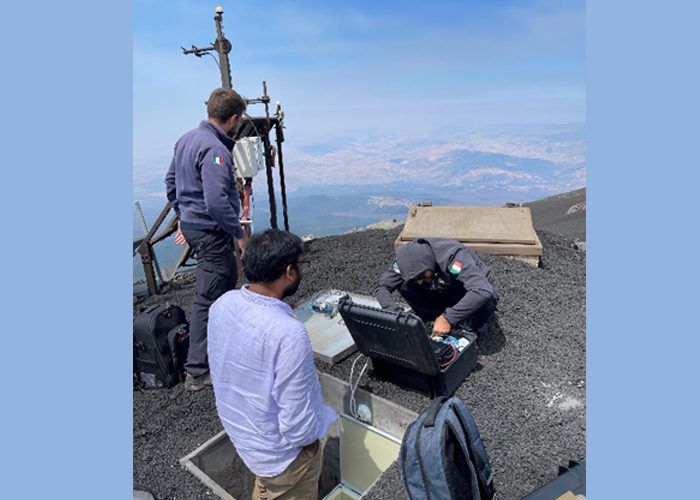AS RECENT events in Hawaii have shown volcanic eruptions remain a clear and present danger to life on earth. If eruptions can be predicted early enough it can save many lives.
Leading product design company Wideblue has worked with the University of Glasgow on building a gravimeter device which can detect minute changes in local gravity caused by magma flow which provides early warning of a potential eruption.
Several of the devices have now been deployed in the field on Mount Etna in Sicily, to start collecting valuable data which can be used in conjunction with other early warning systems. The device, called Wee-G, measures the flow of lava (shifting of mass) at the summit of the volcano. It uses the same MEMS technology (Micro-electromechanical) found in mobile phones (as accelerometers) to produce an ultra-sensitive gravimeter which can measure tiny changes in local gravity. The silicon springs used in the device are ten times thinner than a human hair which makes the accelerometer very sensitive to any changes in gravity.
Barry Warden, managing director, Wideblue said: “We have been working closely with the Institute for Gravitational Research at the University of Glasgow on the product design and development of the Wee-G. Our role was to develop a self-leveling mechanism to allow remote leveling adjustment of the device as well as create a watertight enclosure to protect the electronics and MEMs from moisture. We also created an insulation system to prevent the MEMS being subject to temperature fluctuations from the external harsh environment.”
He added: “A key consideration in designing the device was cost. Commercial gravimeters are very expensive. The comparative low cost of the Wee-G means that several can be deployed out in the field simultaneously creating what is known as a gravity imager. This will provide much richer data sets for scientists and volcano experts to study and hopefully help them predict potential eruptions with more accuracy.
For further information about the Wee-G project please visit: http://www.newton-g.eu
For further information about Wideblue please visit
